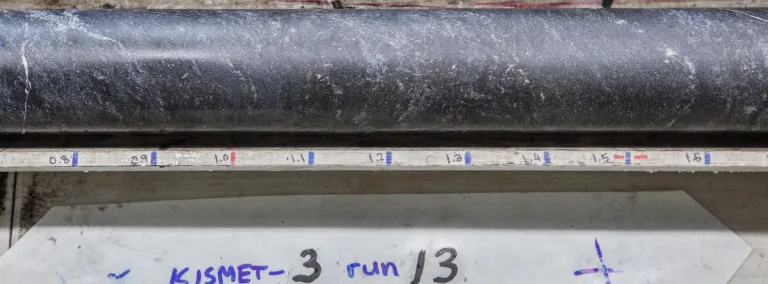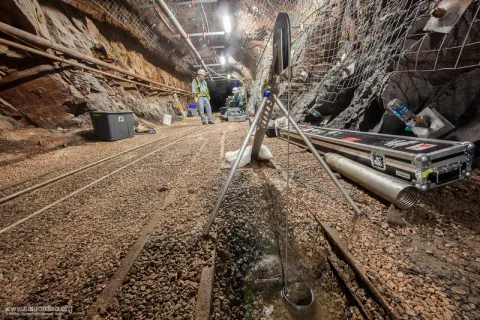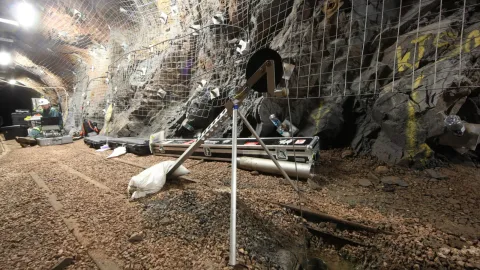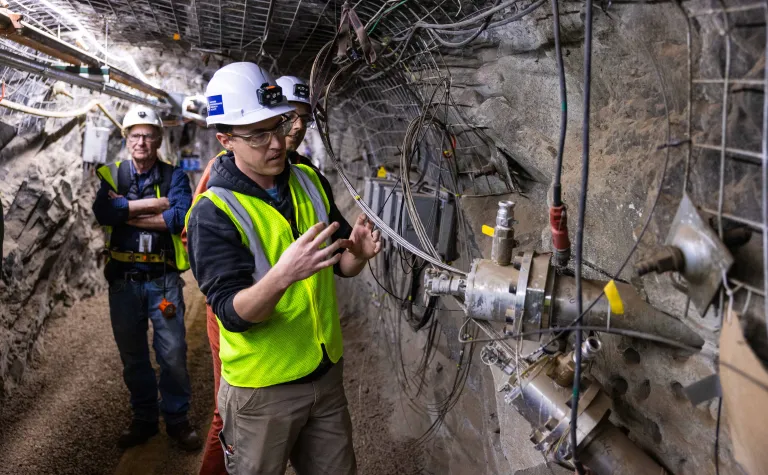
kISMET
On the 4850 Level of Sanford Lab, scientists with kISMET (permeability (k) and Induced Seismicity Management for Energy Technologies) drilled and cored five 50-meter deep boreholes. Led by Curtis Oldenburg and Patrick Dobson of Lawrence Berkeley National Lab, the team wanted to better understand the relationship between the rock fabric and fracturing as a way to tap into and use the earth’s heat as an energy resource.
“We hope to develop permeability enhancement techniques that can improve our ability to extract heat from geothermal reservoirs,” Oldenburg said. “The best way to engineer permeability is to fracture the rock.” These engineered geothermal systems are call Enhanced Geothermal Systems, or EGS.
The kISMET project helped inform how to develop EGS sites.
The best way to engineer permeability is to fracture the rock.”
Peering Inside Boreholes
After drilling the boreholes, the kISMET team lowered an optical televiewer into each hole. A camera took continuous photos of the borehole walls, which helped scientists determine intervals to target for fracturing. Other tools were “parked” inside the boreholes to record and monitor several things, including the stress state, rock fabric and existing fractures.


Fracturing the Rock
The stress state controls the orientation and development of fractures, both natural and man made, while rock fabric refers to the non-isotropic character of the rock. The rock at Sanford Lab tends to have a fairly strong fabric, making it cleave, or split, along one plane.
To create fractures, scientists injected water at 4,000 psi. The key to extracting geothermal energy is to create just the right amount of permeability to capture the heat.
Accessing Vast Heat Resources
At about 4,000 miles below the surface, the Earth’s temperature is nearly that of the sun’s surface—9,932 degrees Fahrenheit. Closer to the surface, temperatures are dramatically cooler, but remain warm enough to be a potential source of renewable energy. EGS technology has the potential to access these vast resources of heat as a way to meet the energy needs of the United States.


